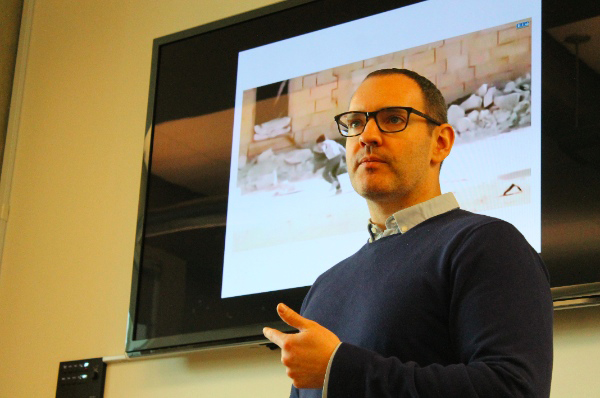Did you hear about the three-breasted woman from Florida? Or see the video of a bird shitting on Vladimir Putin?
Craig Silverman has, and he wants you to know they're fakes. The Montreal-based journalist best known for collecting media mistakes on his Poynter Institute-hosted blog Regret the Error, has turned his scope on fake news and social media hoaxes.
His website Emergent, which is part of a research project for Columbia University's Tow Center for Digital Journalism, tracks unverified news stories, how media discusses them, and if and how the media makes readers aware that they're unverified.
Tonight, he takes that message to the public with his free lecture "The Hoax Economy: Why our online world is awash in dubious rumours, hoaxes and fake news," at the University of British Columbia's Robson Square. Silverman spoke with The Tyee yesterday about fake news and why we're prone to believing the unbelievable.
We asked him to provide examples of the prevalence of fake news in the digital media landscape and how we, as readers, can discern truth from Internet fiction. Following is a transcript of the interview, which was edited for space.
A brief history of hoaxes in the media
"In the early 1800s in the U.S., the so-called penny press, they routinely just made shit up all the time. One famous example from the New York Sun where... they reported that there were half-man, half-bats on the moon.
"There were lots of examples (in my research) where I saw news organizations were like 'There's this thing on Reddit, and it's a pretty amazing image... so let's just get it up on our site because it will probably get some traffic'.... So they see this stuff as just something they can exploit.
"Headlines where they're treating it as true or using a question mark to suggest 'maybe' it's true, that actually implants it in people's brains as being true, and that's based on some studies of innuendo headlines."
It's not about audience intelligence
"There are definitely people who are very careful about saying 'what's the source of this and what evidence are they citing?' But I don't think that's the majority of people by any means.
"(Hoax creators) appeal to our pre-existing beliefs and they appeal to emotion. And if you hit those two things in tandem, the level of skepticism and the willingness to keep checking starts to dissipate.
"Journalists in particular have to be really aware that any time they touch something, any time they help propagate something, the very act of doing that, even if they're careful about hedging language, gives it more exposure and more credibility.
"I'm not saying 'never deal with things that are unverified,' but you have to factor that in that you have additional power and you give credibility to it."
Even reputable outlets report unverified information
"There was a claim a few months ago that ISIS had captured fighter jets and was learning to fly them. This came from a reputable human rights organization and it was in a lot of media reports. But to this day there's no evidence.
"We have the 'unverified' tag on Emergent, and there's lots of stuff that still remains unverified... we just haven't been able to figure out whether it's fully true or not.
"One of the bigger challenges for journalists today is dealing with that uncertainty and ambiguity, and finding ways to, rather than making people think it's true, communicate an element of complexity."
Free tools to de-bunk questionable reports
"Reverse image search. You can do this with Google, or there's actually a Canadian company TinEye.... You can take an image that you found online and find everywhere else online it appears. This is really useful for those stories that are spreading.... If there's an image that's related to it, then you can see everybody else who's been writing about it and where else it exists online.
"(For) every digital image there's the photo you see, and then there's the data of that image you don't see -- the meta-data. If you use something called an EXIF (exchangeable image format) reader, you can see the data about a particular image... when it was taken, the exact time; latitude and longitude... and just on a basic level it tells you the camera that took it.
"The YouTube Data Viewer does two things: One, you can put in the URL of a video you're interested in and it gives you the exact upload time; two, when a video is uploaded, thumbnails are created -- little stills are extracted... and that's what you'll see when you go to the YouTube page. It extracts all of those thumbnails for you and then you can do a reverse image search... to see where else those stills might have been placed or extracted online."
Take chances, make mistakes
"There was a great book called The Vanishing Newspaper... and the author Philip Meyer argued that the worst kind of paper would be the paper that's never making mistakes and never issuing corrections, because then they're just playing it utterly safe and they're not pushing and they're not trying to get into areas where it's actually hard to confirm things." ![]()
Read more: Media, Science + Tech
















Tyee Commenting Guidelines
Comments that violate guidelines risk being deleted, and violations may result in a temporary or permanent user ban. Maintain the spirit of good conversation to stay in the discussion.
*Please note The Tyee is not a forum for spreading misinformation about COVID-19, denying its existence or minimizing its risk to public health.
Do:
Do not: